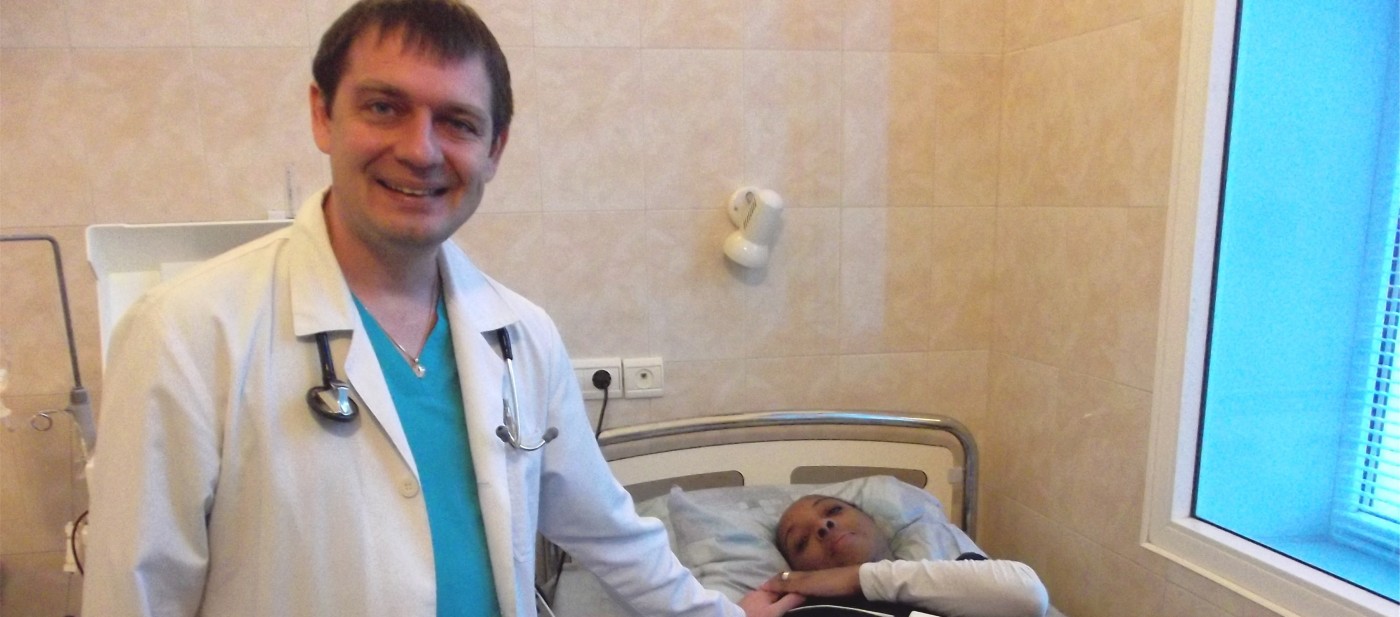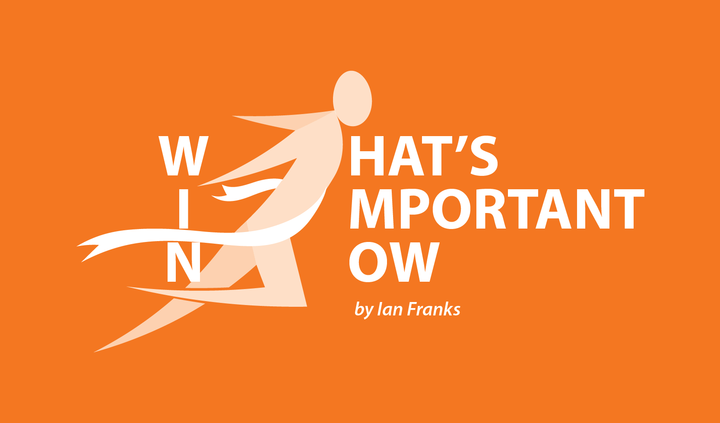Phoebe’s HSCT Story: Back home (Last in a Series)
Written by |


Phoebe Scopes was the first international patient to receive Hematopoietic Stem Cell Transplantation (HSCT) therapy for multiple sclerosis in Moscow. In this fourth, and last, part of her story, we join Phoebe on her return home to the London.
Ian: What is your post-HSCT MS state from getting home until today?
Phoebe: Back home, four months post treatment, I shared video footage with my “newly appointed” neurologist and hematologist. The video showed me the day before discharge from the hospital walking quite freely for three-four meters without the need for any kind of assistance.
By now, though, I was experiencing the latent effects of chemotherapy and was leaning heavily on two canes, so I didn’t resemble the footage at all.
I did, however, retain the improved cognitive position I showed in the hospital after treatment, but felt that I was slowly losing the physical gains realized after HSCT.

The roller coaster ride of treatment then recovery after HSCT, created and drawn by Phoebe Scopes.
For a while, I moved through different levels of wellness, sometimes feeling strong and upbeat while other times experiencing total body weakness, and a return of old symptoms often worse than they were before. I went into early menopause and my hormones were all over the place, which brought on bouts of depression. I coined this stage as the “rollercoaster” ride, and like many HSCT patients I believed that the real improvements would come once the effects of chemo had diminished.
We are told that the rollercoaster ride can last up to two years after treatment, so many have bided their time only to find that two and three years later they seem to still be waiting for significant benefits while their disease remains worse than it was before HSCT.
In some ways, I felt that my MS was continuing to progress, despite gaining some cognitive improvements early on.
I was definitely what’s known as a “responder” to HSCT, but with the return of some difficulties relating to mobility, I believed I was one of the 25% who needed further disease ablation — what I called “top-up” treatment. Top-ups are courses of chemotherapy divided and spread out over anything up to six months for the purpose of destroying those pre-HSCT rogue cells that still remain after HSCT, and are responsible for low-level immune inflammation.
After receiving top-ups, I experienced marginal improvements to my mobility again. But, as before, the benefits gradually disappeared. After this, my new neurologist advised me that more chemo could create other health complications. I definitely agreed with him so, declined another course.
It’s at this stage that I made a difficult, but liberating, decision to stop destroying my now fragile immune system with more chemotherapy, steroids and other pharmaceuticals, and start the long but achievable journey of healing my body using a natural approach.
HSCT is not for everyone, but I believe it is important that it is understood and clearly made available to patients much earlier in their disease, preferably before there is disability. This does not guarantee treatment success but it provides a stronger probability.
Ian: It’s good to hear you commenting so favorably about HSCT, but in your own case do you feel it was worthwhile having HSCT, or do you now regret having it?
Phoebe: I rarely get asked this question by family and friends, but it often comes up within the HSCT circle where either someone exploring treatment raises the topic, or one HSCTer asks the other whether they have regrets.
Most people who receive treatment have had to raise funds and take their family and friends on an emotional journey of hope for a cure. They understandably feel guilty if they are to admit the failure of treatment and a sense of disappointment can overshadow everything at this stage.
Personally, I neither regret having HSCT, nor hail it as a “miracle cure” treatment.
Yes, there are HSCTers with incredible stories about how their lives have been transformed because of treatment; people like Carmel Turner, who got out of her wheelchair and walked AND is still walking and working in a job she loves, but couldn’t do before.
There are others with less dramatic, yet very encouraging, stories. But I can’t ignore those for whom treatment results have been disappointing and, like me, have struggled with the side effects of the HSCT regimen.
I am glad I was in a position to use HSCT and I definitely experienced significant improvements after treatment, even though some of these were short-lived. The biggest improvement that has stayed with me is the one that restored my cognitive abilities to allow me to construct things such as this story. However, I do sometimes feel that maybe my cognitive state would have recovered on its own after the relapse I was having at the time.
So, for me, there is no clear winning side.
Ian: Phoebe, is there anything else you´d like to say?
Phoebe: Yes, thank you. As an avid researcher, my motto has always been “Knowledge is King.”
It is understandable that when faced with an opportunity to halt a disease like MS, we invest the majority of our time assessing its efficacy and safety. Of course, these two areas are the backbone of any treatment.
There have long been discussions and speculation that HSCT can cause cancer, but there is no strong evidence to support this. Yes, I have heard about a few people being diagnosed with cancer after their HSCT ,but cancer does not just develop overnight, so chances are it was already there before treatment was started. Having said this, I do recognize that maybe HSCT can accelerate the pace of existing cancers, so I feel it is right that there is always a healthy level of awareness.
I also think we need to know more about the long-term side effects of some of the drugs used in treatment. For example; Cyclophosphamide (chemotherapy drug) and Prednisone (steroid) are both known to cause peripheral nerve damage, which may be temporary, but can be permanent. If we are trying to improve our disease, does it make sense to use drugs that have the potential to damage us further?
It is also worth knowing that some of the side effects from chemo-related treatments like HSCT do take time before presenting themselves.
A number of people who received HSCT two or more years ago for example have reported being diagnosed with AVN (Avascular Necrosis). AVN is a painful destructive disease of the bone that brings with it the need to replace hips, knees and other joints, and is most often the result of using Prednisone and/or steroids.
It is my opinion that these side effects do not affect everyone and I don’t believe that this information would deter many people from receiving HSCT. But it would be good for us all to know before using these drugs whether they are being used to “manage” disease, and certainly if one is considering HSCT.
It’s well worth investigating and asking ourselves the question about the risk-to-reward ratio.
Ian: Finally, please tell us how you are, and what you are doing to look after your health today.
Phoebe: Today and for over the last six months, I have been following an all-natural protocol scientifically researched and used to treat MS and other autoimmune diseases with success.
The research and studies were carried out by the late Fredric Klenner, MD, and involve using high doses of vitamins and minerals in a completely orthomolecular practice.
Contrary to what we are told about MS being irreversible, Dr. Klenner proved that myelin can and does certainly repair when given the right ingredients in which to do so. It is a long process but can be achieved.
I wasn’t expecting much to happen for a while, but since starting the protocol, I have already experienced great improvements to many areas of my MS that were not there prior.
I am so grateful to have found this protocol so I’ve set up a Facebook page to provide information and support to anyone wishing to use alternative therapy.
[You are invited to visit my personal MS, Health & Disability website at 50shadesofsun.com].
Note: Multiple Sclerosis News Today is strictly a news and information website about the disease. It does not provide medical advice, diagnosis, or treatment. This content is not intended to be a substitute for professional medical advice, diagnosis, or treatment. Always seek the advice of your physician or other qualified health provider with any questions you may have regarding a medical condition. Never disregard professional medical advice or delay in seeking it because of something you have read on this website. The opinions expressed in this column are not those of Multiple Sclerosis News Today, or its parent company, Bionews Services, and are intended to spark discussion about issues pertaining to multiple sclerosis.






Linda La Rowe
I am intrigued by following this story. To begin, I am highly suspect of using chemo against MS...but my mind is open to hope for good results. All the DMD for MS are immune suppressants and certainly chemo is the ultimate immune suppressant. I have great hope for adult stem cell research but challenge the use of immune suppressants to address the cause of MS in the first place. I understand why current MS science is focused on this because the body is sending antigens to the lesion sights where the myelin coating on the nerve is thus being damaged. I would think scientists would be more specificly focused on which antigen was at work (counteracting which protein) when trying to block the damage being done to the myelin. It would appear that some researchers are taking more of a shot gun approach (kill them all with chemo) to suppress all antigens. I know there is some great research being done in Israel focusing on the protein fibrinogen in creating the stem cells to repair the myelin...and the results results are quite promising so far. BUT what is causing the problem in the first place?
I am also following the research being done using blood flow as the culprit (CCSVI). They open the blood flow (liberation therapy) then followup with stem cells. Some very positive results. I am also watching the research being done focused on opening blocked CSF flow and this I have experienced directly. Go Research!
Julie Blalovk
Thank youfor your recounting of HSCT story. I too am very interested in trying.. And doing my research
Julie Blalock
Thank youfor your recounting of HSCT story. I too am very interested in trying.. And doing my research